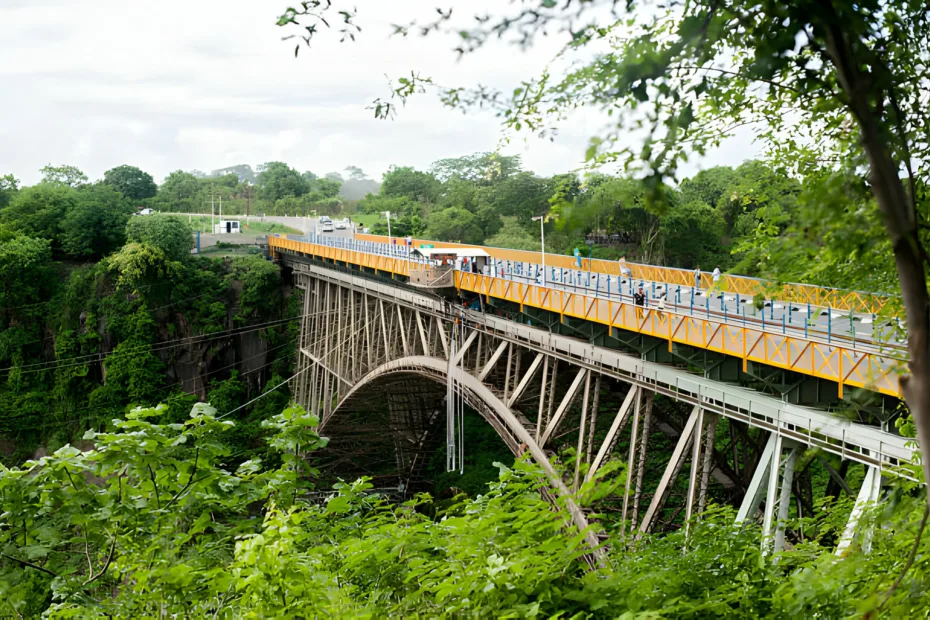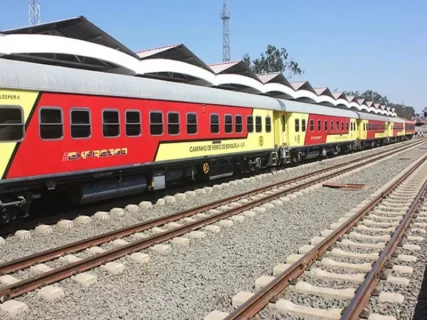The U.S. government is set to expand the Lobito Corridor railway project, one of Africa’s ambitious railway projects. It is a railway project that runs from Angola to Zambia through the Democratic Republic of the Congo. However, the U.S. government seeks to ensure that it reaches the Indian Ocean through Tanzania. The railway would connect African countries to global markets and enhance regional trade and economic growth, supporters say. Helaina Matza, the U.S. acting special coordinator for the Partnership for Global Infrastructure and Investment, spoke about progress made on upgrading and extending the Lobito Corridor. Matza, who just finished a weeklong trip to the DRC and Tanzania, said the trip focused on “relaunching our partnership with the DRC and engaging with the Tanzanian government and private sector on next steps towards extending the economic corridor to the Indian Ocean.”
Project Factsheet
Location: Tanzania
Distance: 1300 kilometers
Countries Involved: Angola, DRC, Tanzania, Zambia
Significance: Promote Inter-African trade and transport
Project duration: 5 years
Cost of Phase: U.S. $250 Million
The Significance of the Lobito Corridor Railway Expansion Project
The construction of one of Africa’s ambitious railway projects extends to more than just improving Africa’s infrastructure. It is also a sign of diplomatic relations between the United States and the African countries involved in the project. Matza noted that ” As President [Joe] Biden has said from day one of the launch of this flagship effort, this corridor has never just been about building infrastructure. It’s about offering high-quality, sustainable infrastructure projects that deliver lasting economic growth.” Erastus Mwencha, former deputy chairperson of the African Union Commission, said transport systems like the Lobito Corridor can help improve trade among African countries. “One of the reasons intra-Africa trade is low is because of poor transport networks,” Mwencha said, adding that goods can sometimes be brought from Europe to Africa at more competitive rates than goods being moved from one African country to another.
Also read:
State of Affairs Regarding the Lobito Corridor Railway Project
The implementation of one of Africa’s ambitious railway projects brings various nations and organizations on board. The U.S. government, with the support of the European Union, African financial institutions, and the governments of Angola, the DRC and Zambia, is working to rebuild and revive the Benguela railway line. This is a line that the countries used to export materials and minerals even before independence. The project will be financed by $250 million supplied by the U.S. International Development Finance Corporation. Furthermore, U.S. officials say the improved railway line is meant to enhance export possibilities for Angola, the DRC and Zambia.
The partly refurbished railway has already carried shipments of Congolese copper to Angola’s Lobito port for shipment to Baltimore on the U.S. East Coast. Furthermore, Matza said the Lobito project would benefit the U.S. and African countries and facilitate business on the continent. In addition to refurbishing existing lines, the project envisions adding 1,300 kilometers of railway from Zambia to Tanzania. The project is slated to be finished by 2029.
Italy to Invest $320 Million in Angola’s Lobito Corridor Railway Expansion Project
A $320 million investment from Italy in the growth of rail infrastructure (Lobito Corridor Development) associated with the Lobito corridor-a 1300 km railway line that helps the connecting of copper belts in Zambia and the Democratic Republic of Congo to the global markets through this great Angola’s Lobito port.
However this development of core rail infrastructure and aligns by the funds,the Alliance for Green Infrastructure in Africa (AGIA)-a initiative to generate ,execute projects and finances with the private sector in this Continent. In addition, the AGIA serves as a bridge between the global north and global south,It will highly help to mobile’s capital for infrastructure projects in the this great continent.
This investments is part of this great nation (Italy) main plan for Africa-this initiative targets to make Italy an energy hub to transport natural gas and energy from Africa to Europe.
Italy joins the global partners the United States and the European Union (EU), United State and the European Union (EU) have invested in the project.Italy’s $320 million investments represents an additional financial commitment beyond the European Union (EU) funds and targets to highly support on the developments of economics corridors in the continent.
Moreover, Italy told the gathering it was joining US and EU efforts to promote sustainable development along the Lobito Corridor—committing to strengthen collaboration and mobilize an additional aggregate contribution of up to $320 million in investment in support of the core rail infrastructure and of the related side projects, with a view to additionally creating synergies with the Alliance for Green Infrastructure in Africa (AGIA).
What Entails the Lobito Corridor Development?
Lobito Corridor Railway Expansion Project is a stretch of railway infrastructure snaking through mineral- and oil-rich parts of Angola, the Democratic Republic of Congo, and Zambia. It connects Southern and Central Africa, and provides access to Eastern Africa and a pathway to the Atlantic Ocean.
Additionally, is typical of the mega infrastructure projects supported by the African Development Bank to ensure Africa attains its stated aim of complete economic transformation, sustainable development and poverty elimination.

Expressing his thanks for being invited to participate at the prestigious G-7 summit, Bank President Dr Akinwumi Adesina told world leaders that the African Development Bank had invested over $50 billion in quality infrastructure in Africa over the past eight years. He stated that the African Development Bank is the continent’s leading financier of infrastructure in Africa.
However, he cautioned that: “Africa has an infrastructure financing gap of $68-108 billion annually.” This needs to be addressed to realise Africa’s ambitions, strongly supported by the G-7, to become a major global economic powerhouse.”
Other Investors to Join the Race for Africa’s Infrastructure Development
In support of the G7’s Partnership for Global Infrastructure and Investment (PGII) goal of mobilizing $600 billion in infrastructure investment in emerging economies, a coalition of US investors highlighted and committed a new billions of dollars in private investment in scaled infrastructure in emerging markets, aligned with PGII priorities.
Furthermore, in a joint statement, the co-chairs welcomed Italy’s renewed commitment to boost development in Africa including by deepening partnerships with African Nations through its Mattei Plan and stressed their commitment to increase coordination between PGII, MPA and the EU’s Global Gateway “to maximize our collective impact as we work to develop transformative economic corridors in Africa.”
Lastly, the Italian Private Sector also added its voice to the growing chorus of those urging greater investment in Africa. In the context of this engagement, the Mattei Plan for Africa has launched new financial instruments in collaboration with the African Development Bank, open to international partners’ contributions.
Lobito Corridor USA Investment to Amount to US$360 Million
The United States has set plans of committing extra funds totalling to US$360 million for the construction of the Lobito Corridor Railway Expansion Project, which is a railway link for exporting metals from the Copper belt of Central Africa. This information was released by the envoy of the United States, Hochstein on 8 February 2024.
In the recent years, the United States has been offering a lot of support to the Lobito Corridor Project that connects the mineral-rich areas of the Democratic Republic of Congo and Zambia to the Port of Lobito in Angola. The railway link is expected to bypass the logistics bottlenecks in South Africa that have been firmly holding the exports of both copper and cobalt.
In the year 2022, a consortium that was held by the global companies Trafigura, Mota-Engil of Portugal and also Vecturis SA of Belgium was accorded a 30-year concession for the railway services and also support logistics on the Lobito Corridor. The consortium has set plans of spending a total of US$455 million in Angola and another US$100 million in the Democratic Republic of Congo on equipment purchases, operation works, and lastly on the maintenance of the railway corridor infrastructure.
Another extra funding will be needed to enable the extension of the 1,700 kilometers railway line into Zambia in the coming second phase.
Lobito Corridor USA Investment Funding
“Currently, we have committed ourselves to fund a total of US$250 million for the Angola phase one of the Lobito Corridor project. I look forward to us adding additional resources for the upcoming second phase of the railway project,” Hochstein stated during an interview ahead of an investment forum on the project that would be conducted in Zambia.
The first phase entailed the upgrade works on the railway line on the Angolan side, and the second phase would entail the construction of a brand new multi-billion dollar railway that would run through Zambia and extend further.

The railway is expected to make an improvement as it is expected that there would be impressive volumes in using the rail by around June-July.
Lobito Corridor Project Manager
The elected project manager of the project is the African Finance Corporation (AFC). AFC had already secured funding commitments from the United Sates, European Union (EU) and even the African Development Bank (AfDB).

The mining firm dubbed as Ivanhoe Mines had even signed up to utilize the railway line for copper exports that originated from the DRC. Additionally, the US has plans of setting up such similar projects in the African continent and the rest of the world.
The United States would benefit from the accelerated trade in the area (region), which possesses very important minerals that would be required for 100% energy transition from fossil fuels. The involvement of the US in the Lobito Corridor can be seen as a way of countering the influence of China in Africa.
Also read:
